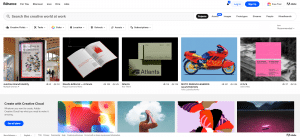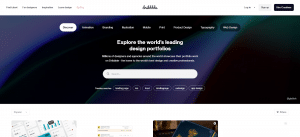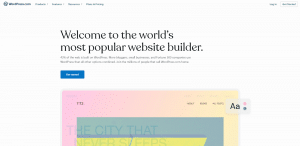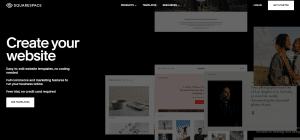A Freelancer’s Guide to Building a Portfolio

Are you a beginner freelancer looking to attract more clients and build a successful career? One of the most important steps you can take is to building a portfolio.
A portfolio showcases your skills, expertise, and previous work, helping potential clients understand what you can offer. Creating a well-structured and visually appealing portfolio can help you stand out from the competition and demonstrate why you're the ideal freelancer for the job.
In this guide, we’ll walk you through the process of building a compelling portfolio that stands out from the competition and attracts clients. Additionally, we’ll recommend a few sites and tools that can assist you in this journey.
Why Is a Portfolio Important?
Before we dive into the details, let's first understand why having a portfolio is crucial for freelancers.
A portfolio acts as a visual representation of your capabilities and serves as evidence of your past accomplishments. It allows clients to assess your skills, creativity, and style, helping them determine if you are the right fit for their projects.
A well-curated portfolio not only showcases your expertise but also instils confidence in potential clients, making them more likely to hire you. A portfolio is a reflection of your work, and when clients review it, they can get an idea of what kind of work you are capable of producing. It also shows that you are organized and have a good eye for design, which can help to build trust and make clients more confident in your abilities.
Building a Portfolio: Step-by-Step Guide
1. Define Your Niche and Target Audience
Understanding your specialization will help you tailor your portfolio to attract clients who require your specific skills.
Consider the type of work you want to focus on and the industries you are passionate about. This is important because clients want to see that you have an understanding of their project and are able to create a portfolio that reflects their needs.
A portfolio that is tailored to their industry and project requirements will show that you are knowledgeable, organized, and have the skill set to handle their project.
2. Choose Your Best Work Samples
Pick projects that highlight your strengths, demonstrate your versatility and showcase your ability to solve clients' problems effectively. Aim for a diverse range of projects that reflect different aspects of your skills and expertise.
If you are starting from scratch and don't have client work to showcase, consider creating personal projects or collaborating with friends to build a portfolio that represents your abilities.
3. Organize and Curate Your Portfolio
The key to organizing your portfolio is simplicity and clarity. Start by categorizing your work samples based on relevant criteria such as industry, project type, or skill set. This will help potential clients navigate through your portfolio and find what they are looking for easily.
Additionally, consider adding brief descriptions or case studies for each project, explaining the challenges you faced and the solutions you provided. This contextual information adds depth to your portfolio and helps clients understand your approach to work.
4. Design and Layout
A visually appealing and user-friendly design is essential for a successful portfolio.
Choose a clean and professional layout that complements your work without overpowering it. Use a consistent color scheme, typography, and visual elements that reflect your personal brand. Ensure that your portfolio is mobile-friendly, as many clients browse portfolios on their smartphones or tablets.
If you're not confident in your design skills, consider using portfolio website builders or templates that provide a professional look with minimal effort. We’ve got a few suggestions for you towards the end of the article!
5. Incorporate Testimonials and Reviews
Including testimonials and reviews from satisfied clients can greatly enhance your portfolio's credibility.
Reach out to previous clients and ask for feedback or recommendations. Highlight positive testimonials that emphasize your professionalism, quality of work, and ability to meet deadlines. If you are just starting and don't have client testimonials yet, consider offering your services to friends or family members in exchange for honest reviews.
Testimonials provide social proof and instill trust in potential clients, making them more likely to hire you.
6. Promote Your Portfolio
Once your portfolio is ready, it's time to promote it and attract clients. Here are a few strategies to consider:
- Utilize social media: Share your portfolio on platforms like LinkedIn, Twitter, and Instagram. Engage with relevant communities and showcase your work to gain exposure.
- Participate in freelance platforms: Join freelance platforms such as Upwork, Freelancer, or Fiverr, and create a profile that links to your portfolio. Bid on projects that align with your skills and demonstrate your expertise.
- Network: Attend industry events, join professional associations, and connect with fellow freelancers and potential clients. Building a strong professional network can lead to referrals and new opportunities.
- Optimize your portfolio for search engines: Implement basic SEO practices to improve your portfolio's visibility on search engines. Use relevant keywords in your portfolio descriptions, headings, and image tags to increase the likelihood of being found by potential clients.
Recommended Sites and Tools
Here are a few sites and tools that can assist you in building your portfolio:
Behance
Behance, created by Adobe, is a great platform for creatives to showcase their work and connect with other professionals. It provides users with an easy-to-use interface to customize their portfolio and add their own images, videos, and other content.
Users can also collaborate with other members and share their work with the Behance community. Moreover, it offers a variety of portfolio themes and editing tools for creating visually stunning portfolios. In addition, users can get feedback on their work and connect with potential employers.
Dribbble
Dribbble offers a community-driven approach and can help you gain exposure and connect with potential clients. Dribbble also provides users with a wide range of tools for creating and sharing their work, from creating detailed project briefs to managing feedback from the community.
Additionally, the platform is a great way to connect with like-minded professionals and build a network of potential clients. Dribbble's user-friendly interface makes it easy to find people in the same industry and collaborate with them.
WordPress
WordPress is a great option for building a portfolio, due to its versatility and ease of use. The platform allows users to customize their websites to suit their individual needs, making it the world’s most popular choice. It provides numerous themes and plugins that are specifically designed for portfolios, allowing users to create a custom website.
Also, the platform is cost-effective and offers a wide range of features that can help you create a visually stunning and professional-looking portfolio.
Squarespace
Squarespace is a versatile website-building platform that empowers individuals and businesses to create stunning and professional websites without requiring extensive technical knowledge.
With its user-friendly interface and a wide range of beautifully designed templates, Squarespace offers a seamless experience for creating websites that are visually appealing and functional.
Whether you're a small business owner, a creative professional, or an entrepreneur, Squarespace provides the tools and features needed to showcase your work, sell products online, and establish a strong online presence.
With built-in e-commerce functionality, responsive design, and reliable hosting, Squarespace simplifies the process of creating and maintaining a website, enabling users to focus on their content and business goals.
Clippings.me
Clippings.me is an ideal portfolio solution for freelancers who are just starting out. It’s a free platform that allows users to create a simple portfolio for showcasing their work.
Clippings.me supports a wide range of content types, making it suitable for freelancers from various industries. Whether you're a writer, journalist, photographer, designer, or any other creative professional, you can showcase your work effectively on the platform. You can include articles, blog posts, photographs, videos, and more, providing a comprehensive overview of your skills and expertise. .
With Clippings.me, freelancers can effortlessly manage their portfolio content. The platform offers a simple editor that allows you to upload and arrange your work seamlessly. You can easily add new pieces, reorder existing ones, and update your portfolio whenever needed, ensuring that it remains up-to-date and relevant.
Conclusion
Building a compelling portfolio is a crucial step for beginner freelancers aiming to attract more clients. By following the steps outlined in this guide, you can create a portfolio that showcases your skills, expertise, and creativity effectively.
Remember to define your niche, choose your best work samples, organize your portfolio thoughtfully, and promote it through various channels. Utilize the recommended sites and tools to enhance your portfolio-building process and increase your chances of success.
Good luck on your journey to building an impressive freelancer portfolio!
FAQs (Frequently Asked Questions)
1. How many work samples should I include in my portfolio?
The number of work samples in your portfolio can vary but aim for a balanced selection that represents your skills and versatility. Typically, including 8-12, work samples is a good starting point.
2. Should I include personal projects in my portfolio?
Yes, personal projects can be a valuable addition to your portfolio, especially if you are just starting and don't have client work to showcase. Personal projects demonstrate your initiative and creativity.
3. Can I update my portfolio regularly?
Absolutely! It's essential to keep your portfolio up to date by adding new work samples, removing outdated ones, and incorporating client testimonials. Regular updates show potential clients that you are active and continuously evolving.
4. Is it necessary to have a separate website for my portfolio?
Having a separate website dedicated to your portfolio can provide a more professional and customizable presentation. However, if you don't have the resources or technical skills, using portfolio platforms or freelancing platforms can be a good alternative.
5. How often should I promote my portfolio on social media?
Consistency is key when promoting your portfolio on social media. Aim to share your work regularly, engaging with relevant communities and utilizing relevant hashtags. However, avoid excessive self-promotion and focus on providing value to your audience.











